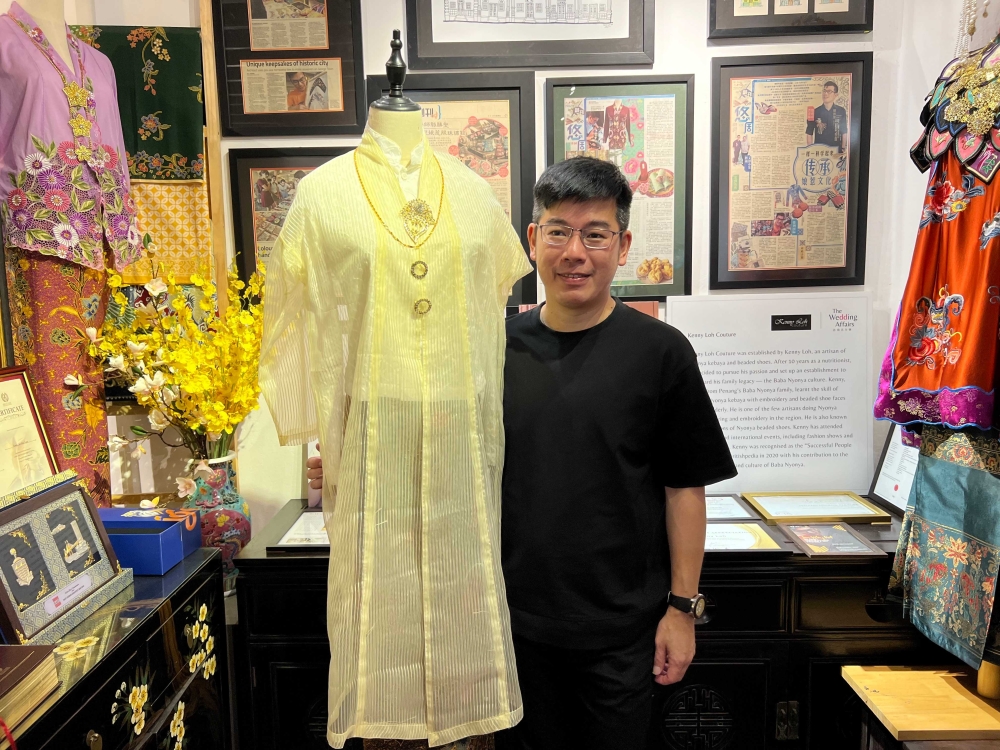KUALA LUMPUR, July 1 — The kebaya’s origins go all the way back to colonial times, and before that, the Middle East, said kebaya expert Cedric Tan.
The kebaya was inspired by the robes worn by colonisers from the European courts, but those were in turn inspired by the abaya, the full-length robe-like dress worn in the Middle East, he told Malay Mail.
“When the Portuguese came, they brought the influence over to wherever they conquered,” he said, explaining that pieces of similar clothing are in other places formerly colonised by the Portuguese, such as Goa in India and Sri Lanka.
Before Islam spread to Malaysia, women were comfortable going bare-breasted as it was an accepted social norm in the heat and humidity of the tropics, Tan said.
But the robes caught on in local fashion and one of the results is the kebaya, he added.
“It was also a kind of class differentiation. Women with such long robes over their body were considered of higher status,” he said.
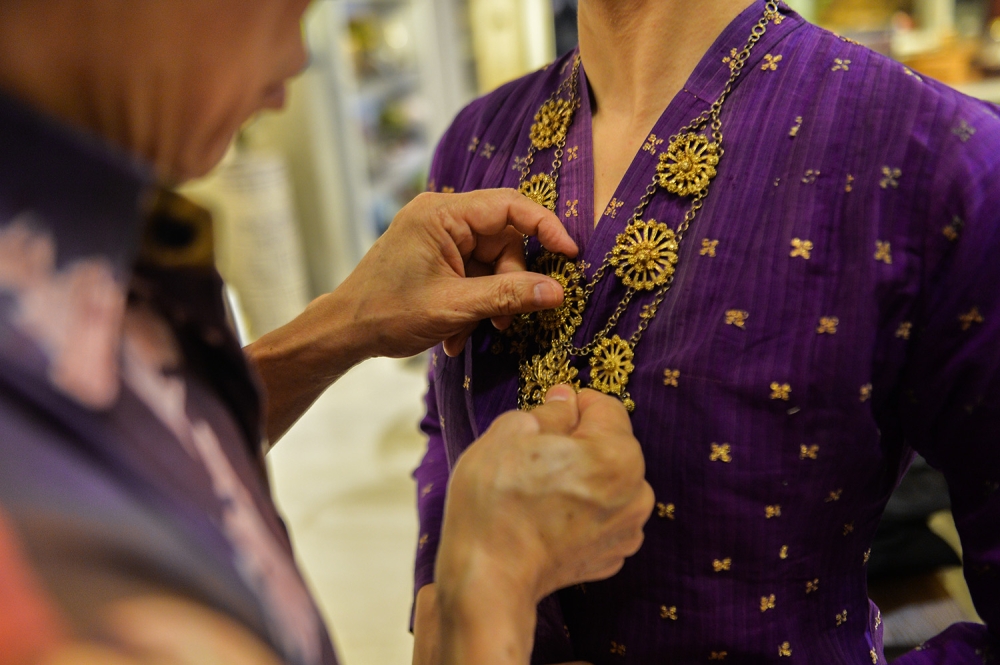
Kebaya as Nyonya fashion
The book Eclectic cultures for All: The development of the Peranakan performing, visual and material arts in Penang published by Universiti Sains Malaysia and edited by Tan Sooi Beng explains how the kebaya caught on in South-east Asia.
From the 1900s to the 1930s the Nyonya wore long blouses called baju panjang in Malay, or th’ng sah in Baba Hokkien.
It was a type of tunic that was wide and loose with a straight cut that fell to the ankles; the long dress was said to project the image of a courteous Nyonya with good upbringing who had her body, legs and hands covered.
The garment was sewn with different kinds of textiles and paired with a batik sarong from Java.
Beginning in the 1910s, the short tunic (tay-sah in Hokkien) with two pockets at the front became popular among the younger Nyonya.
To the Nyonya, the short tunic was a transformation of the long dress and they added lace to the bottom of the blouse.
The kerosang thoe, the brooch that was worn instead of buttons to fasten the blouses, was believed to be first designed by Penang Nyonya and it spread to Singapore and Melaka, where it was named kerosang serong.
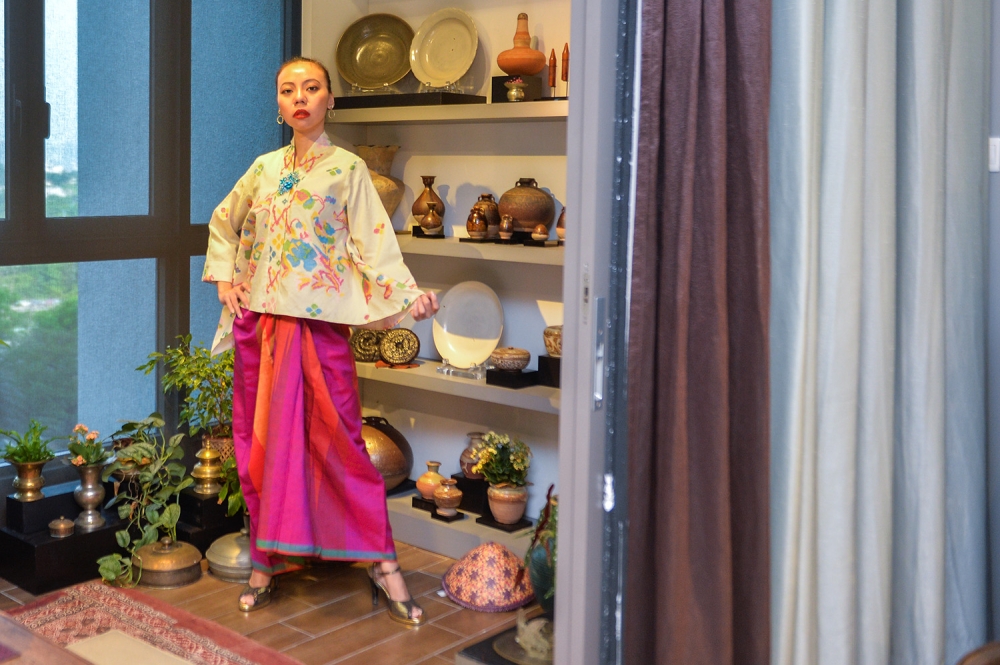
Kerosang thoe means peach brooch and it consisted of three parts: the kerongsang ibu (Malay for the mother brooch that looks like a peach, slanted towards the left of the Nyonya’s body) and two smaller round brooches called kerongsang anak-anak. Some rich Nyonya added an extra circle of diamonds on the three brooches.
The baju kebaya renda was popular among the Nyonya of Medan and Penang in the 1920s and 1930s. With its shorter hem, it soon replaced the baju panjang and became fashionable.
This was followed by the kebaya biku. The term biku (scallops) refers to the minimal embroidery on the sleeves and collar of the kebaya. The kebaya biku remained popular in Penang until the 1950s.
Later, the body-hugging kebaya bandung, worn by Malay film stars, were adopted by fashion-conscious Nyonya in the 1950s.
Named after the town in Java where it originated, the blouse was sewn with lace, batik or other materials. It can be matched with a batik sarong or a long skirt of the same material. It does not feature embroidery.
The kebaya sulam, introduced around that period, is made of rubia or muslin cloth from Europe and it consists of many colours.
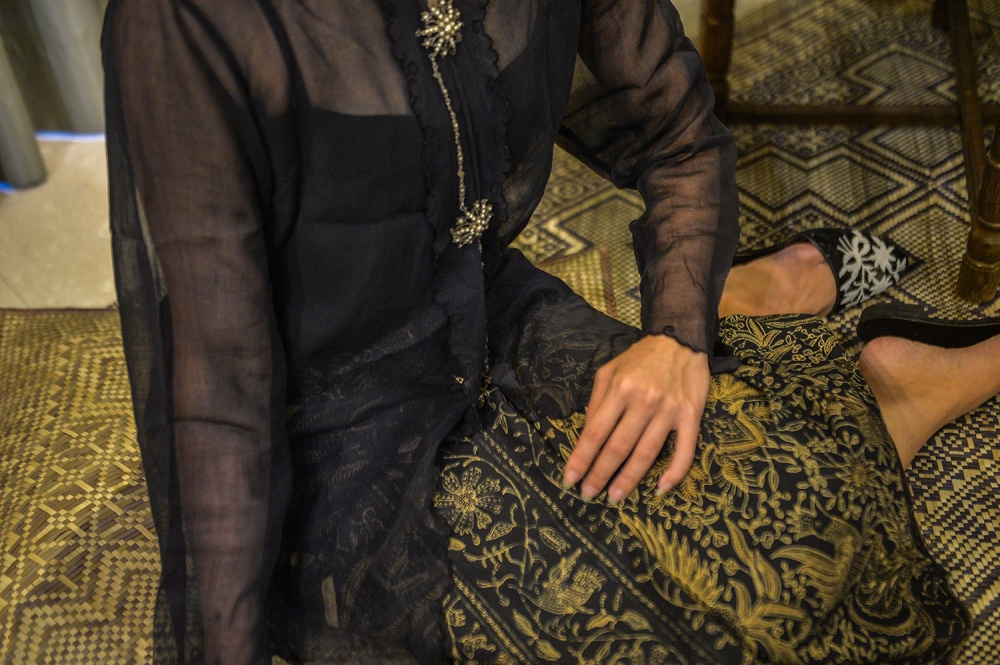
Types of kebaya
Asian art historian John Ang told Malay Mail that there was a kebaya for every occasion, whether it was for use at home or parties.
“For example, kebayas for wearing at home, the kebaya biku. Then there was the one for parties, kebaya renda,” he said.
The kebaya tuaha was a type of kebaya worn for mourning, Ang said, explaining how women wore a black kebaya in the first month after death, while the second month allowed for the addition of silver to the wardrobe and then dark shades of green and blue in the third month.
The fully black kebaya worn in the first month of mourning are rare finds for the textile collector as they were usually burnt once the mourning period was over.
But the kebaya’s diversity has led it through the ever-changing fashions of many different time periods, uses, and events, Ang explained.
Contemporary interpretations of it now include bellbottomed sleeves that align with the downward flare of the waist, lace covering the entire kebaya and the use of different materials for the construction of a single kebaya, he said.
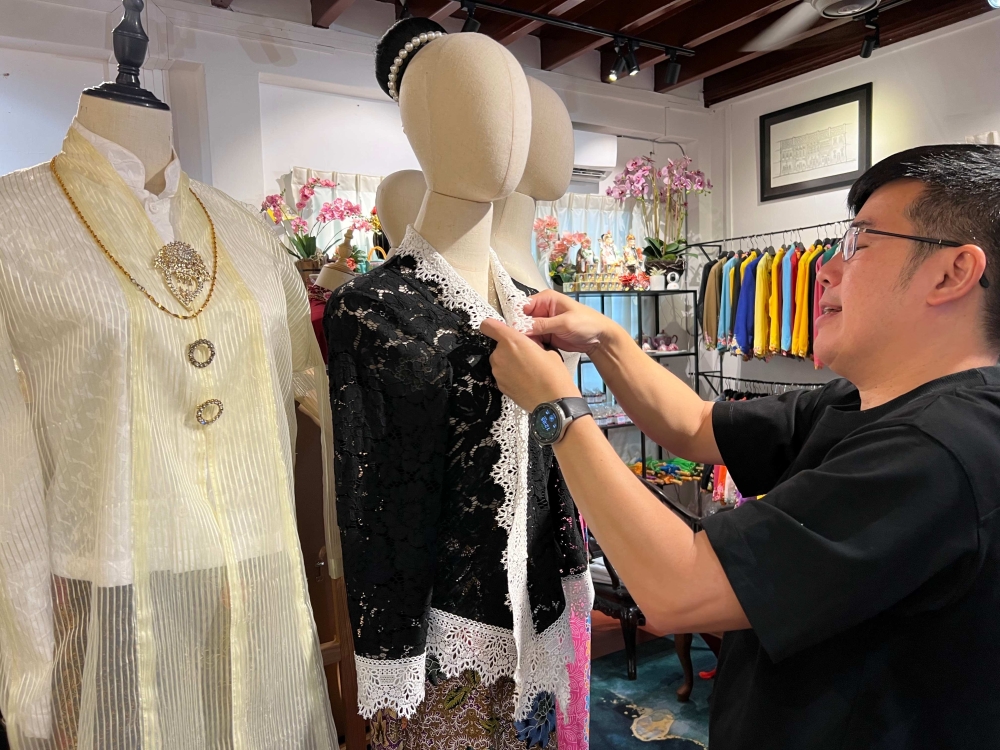
The kebaya today
Kebaya designer and fifth-generation Baba Kenny Loh told Malay Mail that the kebaya sulam was introduced before World War II and it continued to be worn after Malaya’s independence in 1957 until today.
The elaborate embroidery designs on the kebaya sulam often depicted flora and fauna like peony and mandarin ducks but due to Western influences, it also depicted roses and swans. Bright colours such as royal blue, pink and turquoise also become popular due to Western influences.
Today’s Nyonya kebaya designs are modern versions of the kebaya sulam with elaborate embroideries of various designs, including phoenixes.
“My latest design called the Rising Phoenix won the Malaysia Good Design Award.
“Most of my customers wear the kebaya sulam only for special occasions such as weddings or dinners,” Loh said.
Kebaya designer and Nyonya Cecilia Lim told Malay Mail she will be organising a showcase of the kebaya titled “Kebaya through the ages” in August.
The costume consultant for The Little Nyonya series remake will display her own collections of different types of kebayas, including antique baju panjang, kebaya biku and kebaya sulam from the 1930s and 1940s.
But she will not neglect modern casual wear, she added.
“The modern kebaya can be worn as casual wear too and I will show how it can be paired with jeans in the showcase,” Lim said.
